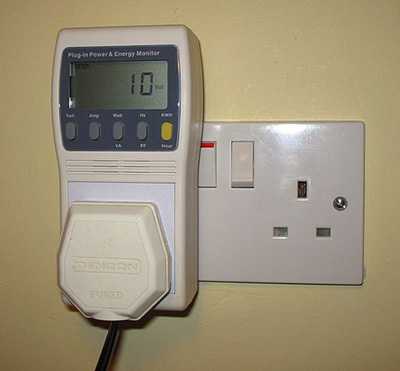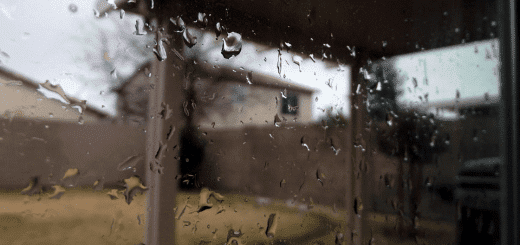Home Maintenance Tips – Easy Projects to Cut Energy Expenditures
Energy consumes a huge portion of a homeowner’s ongoing expenses. Cutting down on energy costs is one step toward lowering expenditures and includes many other significant benefits. Uncover easy ways to reduce a home’s energy consumption.
What are the benefits of cutting energy expenditures?
Lower utility bills are one primary advantage of maintaining a home that uses less energy. The US Department of Energy’s statistics reveal that homeowners can save up to 30 percent annually on their energy bills by incorporating energy saving measures.
Homeowners who plan to sell their home can expect their property value to spike after making energy cutting updates. Green homes sell at a premium in comparison to properties that fail to be energy efficient.
Reducing energy expenditures in a home provides an improved quality of life. The home’s interior is moisture-free, well-ventilated and warmer. MoldMold is a type of fungus that grows in damp or humid conditi... More infestations are deterred, and illnesses associated with the sporesSpores are microscopic reproductive units of fungi or mold t... More are prevented. Energy cost reductions also help avert indoor air pollutants.
The environment, too, benefits when homeowners transform their property into a green space. Emissions are greatly reduced in homes that implement energy saving measures. By applying the following energy saving home maintenanceMaintenance is the routine care, inspection, and repair of a... More tips, you can reduce your home’s energy use 25 to 30 percent.
What is an energy audit?

Homeowners can conduct DIY energy audits to pinpoint where the home loses significant energy.
Help cut energy expenditures by hiring a professional energy audit. A detailed energy audit addresses air leaks, duct air leakage, areas of inadequate insulationInsulation is a material used in buildings to reduce the tra... More and inefficiently operating equipment. Based on the findings of the completed audit, the energy professional offers practical energy-saving remedies.
Homeowners can conduct DIY energy audits to pinpoint where the home loses significant energy. While less thorough than professional audits, DIY inspections can help homeowners implement cost-saving measures, like adjusting heating and cooling settings, turning off lights and unused electronics or running appliances at night.
How do you weatherize a home?
An important step in cutting energy costs is to weatherize the home. Sealing air leaks saves homeowners 10 to 20 percent on heating and cooling costs. Look for gaps around places like windows, doors, electrical outlets and lighting. Apply caulk, foam sealant or foam gaskets to seal the air leaks.
Another important weatherization tip is to add extra insulationInsulation is a material used in buildings to reduce the tra... More. Energy demand is reduced when insulationInsulation is a material used in buildings to reduce the tra... More is added. How much insulationInsulation is a material used in buildings to reduce the tra... More a home requires to improve comfort and save money may be found under the ENERGY STAR recommendations for insulationInsulation is a material used in buildings to reduce the tra... More levels.
How can thermostatA thermostat is a device that monitors and regulates tempera... More settings help cut energy use?
Save up to 10 percent annually on heating and cooling costs by lowering the thermostatA thermostat is a device that monitors and regulates tempera... More 7 to 10 degrees for a portion of each day during cooler months. Turn the thermostatA thermostat is a device that monitors and regulates tempera... More up in the warm season. Invest in a smart thermostatA thermostat is a device that monitors and regulates tempera... More for maximum control, trackable energy data and remote capabilities.
How does heating and cooling equipment affect energy use?
Energy efficient heating and cooling systems can dramatically reduce energy costs by 20 percent. Implement additional energy cutting measures, like adding insulationInsulation is a material used in buildings to reduce the tra... More and weather sealing, and see a 50 percent reduction in home energy use.
Replace the home’s existing heating system if it is more than 15 years old, works inefficiently or if repairing a broken unit would cost more than half the cost to replace it. Change the furnace’s air filters once a month. Clean the warm air registersRegisters are grilles or vents that cover openings in HVAC s... More as needed.
What are ways to save on water heating costs?
Consuming 13 percent of energy costs, heating water is a home’s second most major energy expenditure. Cut energy costs by 7 to 16 percent annually by insulating the hot water tank. Insulate the hot water pipes, too, to lessen heat loss and save 3 to 4 percent a year.
Additional water-heating maintenanceMaintenance is the routine care, inspection, and repair of a... More projects include installing a temperature-sensitive shower head. A switch stops the flow of hot water, but reflows once you restart it inside the shower. This quick home maintenanceMaintenance is the routine care, inspection, and repair of a... More project can be accomplished with a visit to a local hardware store and offers impressive results.
What are energy saving landscaping tips?
Cooling costs are significantly reduced when deciduous trees are planted on the south-facing part of the home. The shade from the trees cools the home in the summer months and provides warmth, from the sun’s rays, during the winter season.
How do you maintain windows to ensure energy efficiency?
Maximize energy efficiency by installing energy efficient windows. Homeowners not in the market for ENERGY STAR certified windows can still take practical, easy steps to reduce energy use:
To ward off the summer’s hot temps, install white drapes or shades to reflect heat away from the property. Install awnings on windows facing south and west to provide shade and cool the home. When the sun beats down on summer days, close window curtains that face south and west.
How do you save energy with refrigerator maintenanceMaintenance is the routine care, inspection, and repair of a... More?
The kitchen fridge eats up energy. Adjust the fridge temperature to 35 to 38 degrees. Ensure the fridge door features a tight seal. Adjust the fridge door’s latch or replace the seal if you can pull out a dollar bill easily upon closing the door upon a George Washington.
Energy efficient windows, lighting and appliances are guaranteed to reduce a home’s energy consumption drastically. Even if you are not in the market for brand new systems, you can still implement simple home maintenanceMaintenance is the routine care, inspection, and repair of a... More strategies and energy saving tips that significantly reduce energy use.
In the event your home undergoes a major disaster, like a flood, fire damage or moldMold is a type of fungus that grows in damp or humid conditi... More infestation, turn to a professional restorationRestoration is the process of returning a property to its pr... More service. Skilled technicians tackle various disaster scenarios, including water damage, fire and smoke damage, flood and sewageSewage is wastewater containing biological and chemical cont... More cleanup, and storm damage restorationRestoration is the process of returning a property to its pr... More.
When your residential or commercial property requires a professional restoration and cleaning, professionals are available to return your property to its pre-disaster condition.












